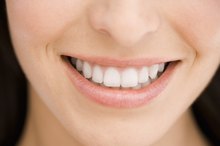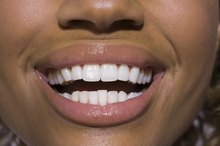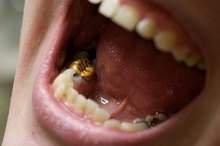What does fact checked mean?
At Healthfully, we strive to deliver objective content that is accurate and up-to-date. Our team periodically reviews articles in order to ensure content quality. The sources cited below consist of evidence from peer-reviewed journals, prominent medical organizations, academic associations, and government data.
The information contained on this site is for informational purposes only, and should not be used as a substitute for the advice of a professional health care provider. Please check with the appropriate physician regarding health questions and concerns. Although we strive to deliver accurate and up-to-date information, no guarantee to that effect is made.
How to Extract a Tooth at Home
Tooth extraction is a procedure that can be done at home. You should know, however, that there are pros and cons. The pro of at-home extraction is avoiding the cost of a visit to the dentist. The con is the tooth possibly could break off, you might not be addressing potential infection and/or abscess and there may be more pain involved since you probably don't have the same training and tools a dentist does.
Determine the looseness the tooth. If the tooth is not loose at all, you are in for an extremely difficult extraction; it would be best in this situation to call the dentist. If the tooth is loose--especially if it's dangling--you will have a greater chance of pulling it successfully with minimum pain. Baby teeth and teeth that are loose due to gum disease are easiest to extract.
How to Fix a Chipped Tooth Without Going to the Dentist
Learn More
Brush your teeth to make sure any extra food particles are out of the way. If you are not able to do this, swish water in your mouth and spit it back out a few times.
Grasp the tooth by using a small square of gauze. Pull firmly. If the tooth does not come out fairly quickly, you may want to stop this process and seek a dentist's help. Continuing to pull on a firmly embedded tooth may aggravate it and cause you a considerable amount of pain.
Tooth Pain & Nausea
Learn More
Rinse and spit a few more times once the tooth is out. Hold a clean piece of gauze next to the gum where the tooth came out for a few minutes to help stop the bleeding. If the bleeding continues, is very heavy, or if you have significant pain, call a dentist. Otherwise, you can treat the soreness with over-the-counter medication.
Monitor your mouth and body for signs of infection. If you notice redness and swelling at the site of extraction, if there is a foul smell or pus in or near the tooth cavity or if you generally feel bad and have a fever, call a dentist. If infection begins, make sure you receive any necessary antibiotics so your condition doesn't worsen.
Warnings
Warning: Most dentists advise strongly against pulling your own teeth or the teeth of others due to the chances of complications.
Related Articles
References
- Renton T. Dental (Odontogenic) Pain. Rev Pain. 2011;5(1):2-7. doi:10.1177/204946371100500102
- Lin M, Genin GM, Xu F, Lu T. Thermal Pain in Teeth: Electrophysiology Governed by Thermomechanics. Appl Mech Rev. 2014;66(3):0308011-3080114. doi:10.1115/1.4026912
- Rajeswari K, Kandaswamy D, Karthick S. Endodontic management of patients with systemic complications. J Pharm Bioallied Sci. 2016;8(Suppl 1):S32-S35. doi:10.4103/0975-7406.191962
- Markowitz K, Moynihan M, Liu M, Kim S. Biologic properties of eugenol and zinc oxide-eugenol. A clinically oriented review. Oral Surg Oral Med Oral Pathol. 1992;73(6):729-37.
- Hersh EV, Ciancio SG, Kuperstein AS, et al. An evaluation of 10 percent and 20 percent benzocaine gels in patients with acute toothaches: efficacy, tolerability and compliance with label dose administration directions. J Am Dent Assoc. 2013;144(5):517-26.
- Bei M. Molecular genetics of tooth development. Curr Opin Genet Dev. 2009;19(5):504-10. doi:10.1016/j.gde.2009.09.002
- Hasan S, Singh K, Salati N. Cracked tooth syndrome: Overview of literature. Int J Appl Basic Med Res. 2015;5(3):164-8. doi:10.4103/2229-516X.165376
- American Dental Association. The American Dental Association. Do You Have a Cracked Tooth?
Warnings
- Warning: Most dentists advise strongly against pulling your own teeth or the teeth of others due to the chances of complications.
Writer Bio
Charlotte Johnson is a musician, teacher and writer with a master's degree in education. She has contributed to a variety of websites, specializing in health, education, the arts, home and garden, animals and parenting.







